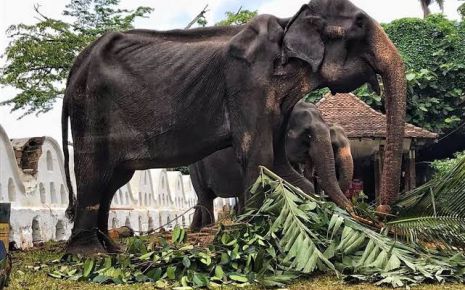Review: An overview under Code of Civil Procedure, 1908
Introduction: What is understood by the term 'Review'
Review is an exception to the rule that once the court has pronounced the judgment and signed it, it has no jurisdiction to alter it and it ceases to have control over it. The power of review in civil cases is derived from Section 114 of the Code of Civil Procedure, 1908 (hereinafter referred to as "CPC"), while Order 47 of CPC provides for the procedure of Review.The general principle is that once the court has decided on a particular case, the court becomes Functus Officio, which means that such a judgment is final and that it cannot be changed. Review is a very reluctant step by the court, and it is called only when there is a serious error or some omission in the judgment [1]. In Review, the case is again decided by the same court.
A review case is not equal to that of the original case and the case cannot be reopened or reconsidered or the decision cannot be changed until the court is sure that they have committed a grave error. To review a case that has already been decided is a waste of time if no error is found. If the review application is not maintainable before the court, then it cannot be described as an application for clarification or modification.[2]
Who may apply for review?
The application for the review of the judgment can be filed by the aggrieved party against whom the order or decree of the court has been passed.[3] The term aggrieved party in common use means the party against whom the decree or an order has been passed. The aggrieved party can file an application for review of the judgment if they feel that the judgment has been wrongfully pronounced.[4]The term person aggrieved is not conclusive and sometimes the term "party aggrieved" has been used. A person who is not a party to the judgment and is not affected by the decree, cannot apply for review. The third-party can only apply for review if it has been affected by the order passed by the court.[5]
When does review lie?
A decree or order is open to review if no appeal is allowed. When an appeal is dismissed because it is time-barred or it was incompetent, the party can file for review.[6] In cases where an appeal lies but is not preferred, an appeal is also available to the aggrieved party the review petition is maintainable, and the fact that an order can be appealed in the higher court is not a ground to reject an application for review.The application for review can be filed if no appeal has been instituted, however, if the appeal has already been filed before the review application, the court will not allow the review application. If the higher court dismisses the appeal no review can be filed in the lower court. The CPC allows review of the judgment on a reference from the small causes court.[7]
By whom is the review made?
Review is a reconsideration of the same judgment that has been passed by the same court and if possible, by the same judge, if the same judge is available then he has the jurisdiction to decide the case again and review it. The reason behind this is that the judge will remember the arguments that were contended before him and what was not. Therefore, it is best suited that he should review the decision because he is best suited to remove any error made in his judgment. [8] However, in cases where it is not possible for the judge who gave the judgment to review it then his successor or any other judge of the same jurisdiction may decide the case.[9]Application for review: Procedure at hearing
In the first stage, the application commences ex-parte by the aggrieved party, the court after looking into the application may reject the application or accept it and call the other party to show why review should not take place.[10]In the second stage, the application of review shall be heard again by the same court and if the rule is discharged, then the application will be dismissed, while if the rule is made absolute then the matter will be heard again.[11]
In the third stage the case will be decided on the merits, the court after deciding the case may grant the original decree or vary it. [12] Any order that will be made by the court that modifies the decree or reverses it, then a new decree will be passed which will supersede the previous one.[13]
Limitation: The application for review of a judgment should be made within 30 days from the date of the decree or order other than that in the Supreme Court.[14]
Review by High Court and Supreme Court: The provisions of Order 47 do not apply to the writ petitions under Article 226 of the Constitution of India that are filed in the High Court, due to the amendment in Section 141 of CPC. Nothing in Article 226 can prevent the High Court from exercising the power of review. The High Court can review a judgment and erase a possible error that might have occurred. The High Court has the power to review under Article 226 of the Constitution and Order 47 does not apply to the power of review of the High Court. This power of review should be utilized by the High Court if there is a miscarriage of justice. [15]
Furthermore, Article 137 of the Constitution of India confers the power to the Supreme Court to review judgments subject to any laws or rules made by the parliament under Article 145. The CPC cannot curtail the power of the Supreme Court.[16]
When is the application for review made?
Application for review can be made following grounds:
-
Discovery of New Evidence: An application for review can be filed by the applicant if there is a discovery of some new evidence that was not possible to present at the time the decree was passed.[17] It is a general rule that the decree passed will not be overturned until there is a very strong reason to do so. So, when the ground of new evidence is the reason for review of judgment utmost care is taken. The party who has filed for review must show that there was proper care taken while adducing evidence at the trial and that the new evidence should be conclusive in nature or of such a nature that it would change the decision of the court. In the case where the evidence could have been produced at an earlier stage and reasonable care could have been taken the application for review will be refused.[18]
-
Error Apparent on Record: Error apparent on the face of the record is another ground for review. The error should be determined by examining the case on the facts. If the error is not self-evident and requires examination, then it will not be termed as an error apparent on the face of the record. The error that needs a long process of consideration of all the law points then it will not be termed as an error apparent on the face of the record.[19] Reasons like non-consideration of a statutory provision or omission of a material issue or when the amendment in law took place retrospectively these reasons will not be termed as errors apparent on the face of the record. The Explanation to Order 47 Rule 1 states that if the question of law on which the judgment is based and if it has been reversed in the subsequent judgment will not be grounds to review the judgment.
- Other Sufficient Reason: The phrase "sufficient reason" isn't defined anywhere. But reasons like when the judgment has been passed under some misapprehension of circumstances when the party was not provided with the opportunity to produce the evidence when the court has failed to consider some important issue or if the court has failed to consider any statutory provision, these will be considered sufficient reasons while reasons like or absence of the party on the date of the hearing; or subsequent events; or failure of a party or his pleader to raise a plea, or when the case was mismanaged by his counsel or there was a different view taken by the court in the subsequent case will not be considered sufficient reasons.
Relation of review with Reference to Reference, Appeal, and Revision
A. Review And Reference:
- Reference has been mentioned under Section 113 and Order 46 of the CPC whereas the right to review is given under Section 114 and Order 47.
- The main difference is that under reference, a subordinate court seeks clarification from the High Court when there is a question of the validity of the judgment. Whereas in review, it is the aggrieved party that asks for re-examination of the case.
- The case can be referred only by a civil judicature or by an appeal of a party under the suo moto process.
- Under review, the process is done in the same court where a judge reevaluates new evidence and errors that happened in the legal process.
- Reference is just a communication between the subordinate court and the High Court. The review petition is done when there is a petition for re-examine if there is a newly appeared evidence or error in the previous case.
- Ground for reference arises on the question of the validity of the provision of an act, ordinance, or regulation. Ground for review arises on the discovery of new evidence or any other reason that is deemed to be satisfactory.
- The proceeding of reference can start even when there is a pendency of the case. It has to be done before a judgment or decree is passed. However, the process of review petition can only begin when the judge has already passed a judgment or decree against the party who is aggrieved.
B. Review And Revision:
- Where review is just re-examining the case in the same court in front of the same judge, revision means that the higher court shall revise the judgment of any case that has been decided by the subordinate or lower court.
- It is done with the view of correcting a judgment which the higher court deems fit.
- Must have exercised some jurisdiction that is not mentioned under law
- Have failed to exercise the jurisdiction it has been vested with
- The lower court has exercised its given jurisdiction in an illegal manner or with irregularity.
Judicial Precedents:
The Supreme Court in the case of Lily Thomas v. Union of India [20] laid down that the word review is:"The act of looking, offer something again with a view to improve." [21]
In the case of Patel Narshi Thakeshi v. Pradyuman Singhji Arjun Singhji [22] , it was stated that the power of review is not an inherent power which means that it has to be conferred by law by specifically stating or necessarily implied.
The High Court of Madhya Pradesh in the case of Principal Commissioner of Customs v. M.S.S Foods Processors[23] held that a review petition can be made only when there is an error or mistake made on the face of record or there is some other sufficient reason. This error must be apparent and should be made out without conducting further detailed examination.
Board of Control for Cricket in India vs Netaji Cricket Club [24], it was held that Order 47 Rule 1 of CPC provides for filing of an application for review which shall be maintainable not only on discovery of any new evidence or if there is an apparent error on the face of the record, but also if there is any other sufficient reason or necessary on the account of the same mistake. Thus, a mistake made by the court would naturally be called for a review of the order.
Conclusion
The right of review judgment is an exception to the Latin term "functus officio" which means that once a judgment is passed by the court, the case cannot be reopened and the judgment is binding on both the parties. On the application filed by an aggrieved person, the proceeding for review of judgment can be initiated. The review petition, when a decree is passed by the High Court can be made to that judge or their successor.
hen a decree is passed by any court other than the High Court, the review application shall be filed to the same judge who gave the judgment regarding the case or their successor in office. To conclude, the power of review is the power where a court reviews its own judgment and ensures that justice is served.
End-Notes:
- C.K Takwani, Civil Procedure and Limitation, 8th Edition, 2019.
- Delhi Admn. v. Gurdip Singh Uban, (2000) 7 SCC 296
- C.K Takwani, Civil Procedure and Limitation, 8th Edition, 2019
- JasbhaiMotibhai v. Roshan Kumar, (1976) 1 SCC 671
- Shivdeo Singh v. State of Punjab, AIR 1963 SC 1909
- Ram Baksh v. RajeshwariKunwar, AIR 1948 All 213
- Order 47 Rule 1(1)(c), Civil Procedure code, 1908
- Supra at 1
- Reliance Industries Ltd. v. Pravinbhai, (1997) 7 SCC 300
- Order 47 R. 4(1), Civil Procedure Code 1908
- Order 47 R. 4(2), Civil Procedure Code 1908
- Order 47 R. 8, Civil Procedure Code 1908
- Sushil Kumar v. State of Bihar, (1975) 1 SCC 774
- Art. 124, Limitation Act, 1963
- Gujarat University v. Sonal P. Shah, AIR 1982 Guj 58.
- Art. 137, Constitution of India, Or. 40, Supreme Court Rules, 1966
- NundoLal v. Punchanon Mukherjee, AIR 1918 Cal 618
- C.K Takwani, Civil Procedure and Limitation, 8th Edition, 2019
- Thungabhadra Industries Ltd. v. Govt. of A.P, AIR 1964 SC 1372
- Lily Thomas v. Union of India, (2000) 6 SCC 224
- SCC PP. 247-48, Para 52
- Patel Narshi Thakeshi v.Pradyuman singhji Arjun Singhji, (1971) 3 SCC 844
- Principal Commissioner of Customs v. M.S.S Foods Processors, 2017 (7) G.S.T.L 394 (MP)
- Board of Control for Cricket in India v. Netaji Cricket Club, (2005) 4 SCC 741
Law Article in India
Legal Question & Answers
Lawyers in India - Search By City
LawArticles
How To File For Mutual Divorce In Delhi

How To File For Mutual Divorce In Delhi Mutual Consent Divorce is the Simplest Way to Obtain a D...
Increased Age For Girls Marriage

It is hoped that the Prohibition of Child Marriage (Amendment) Bill, 2021, which intends to inc...
Facade of Social Media

One may very easily get absorbed in the lives of others as one scrolls through a Facebook news ...
Section 482 CrPc - Quashing Of FIR: Guid...

The Inherent power under Section 482 in The Code Of Criminal Procedure, 1973 (37th Chapter of t...
The Uniform Civil Code (UCC) in India: A...

The Uniform Civil Code (UCC) is a concept that proposes the unification of personal laws across...
Role Of Artificial Intelligence In Legal...

Artificial intelligence (AI) is revolutionizing various sectors of the economy, and the legal i...








Please Drop Your Comments